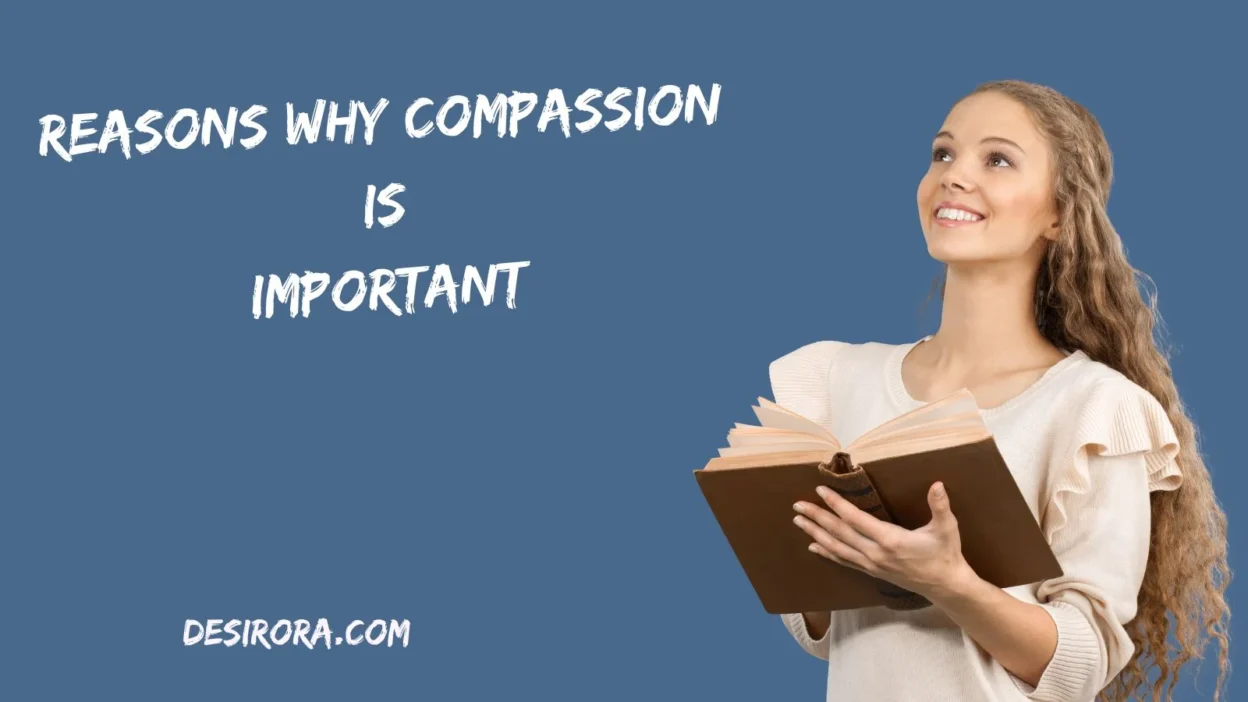Compassion is one of those qualities that quietly transforms lives—ours and those around us. It’s more than just being kind: it’s the capacity to feel with others, to act on that feeling, and to help reduce suffering.
In this article, you’ll discover why compassion matters, how it works in real life, and practical ways to grow it in your own life.
The Power of Compassion in Everyday Life
What One Moment Can Achieve
Think of a time when someone offered you a listening ear during a hard day, or when you helped a stranger in distress. Those moments, small as they seem, carry ripple effects. A single act—like offering a glass of water, or saying, “I understand how hard this is”—can shift someone’s whole mood, or even their day.
The Bigger Picture
Compassion isn’t just about daily gestures. It’s about creating environments—in families, workplaces, communities—where people feel heard, supported, and safe. That kind of strength underpins healthier societies.
Link to Well-Being
When we act compassionately, we trigger positive feedback inside our body: lower stress hormones, a release of oxytocin (“bonding hormone”), and increased feelings of connection. These physical effects strengthen our resolve to keep showing compassion.
What Compassion Really Means: Definitions & Types
Definition
At its core, compassion involves three elements:
- Recognizing someone’s suffering
- Feeling a genuine emotional resonance (not pity)
- Taking action—or wanting to— to alleviate it
A helpful contrast:
| Term | Definition | Why It’s Different |
| Sympathy | Feeling sorry for someone’s suffering | More distance; “I feel bad for you” |
| Empathy | Vicariously experiencing another’s feelings | Emotional resonance; “I feel with you” |
| Compassion | Empathy + a desire to help | Moves beyond feeling into action |
Types of Compassion
- Self-compassion: being kind toward yourself in tough times
- Interpersonal compassion: toward friends, family, strangers
- Global/collective compassion: for groups, society, environment
Each type is important. If you can’t show compassion to yourself, it’s harder to be generous toward others.
Synonym table
| Synonym | Nuance / Usage |
| Kindness | Gentle gestures, daily warmth |
| Benevolence | A goodwill or intent to benefit others |
| Empathy | Emotional understanding / resonance |
| Altruism | Selfless concern for others’ welfare |
| Charity | Giving (time, resources) to help others |
Why Compassion Matters for Mental Health
Reduces Stress & Burnout
Compassionate interactions raise our resilience to stress. For instance, when workplace culture includes mutual support, employees report lower burnout rates.
Battles Loneliness
When we show compassion, we bridge emotional gaps. That counters isolation. You send a subtle message: “You’re not alone; I see you.”
Boosts Self-Esteem & Purpose
Helping others gives us a sense of meaning. That purpose is crucial when life feels aimless. Self-compassion, likewise, combats self-criticism—offering a kinder internal voice.
Clinical Evidence
Researchers have found that compassion-based therapies can alleviate symptoms of depression and anxiety. Compassion training (like loving-kindness meditation) enhances well-being over time.
Compassion’s Role in Building Strong Relationships
Deepening Trust
When you respond compassionately, others feel safe being vulnerable. Trust deepens. You show: “I’m here, I care.”
Resolving Conflict More Gently
Conflicts often escalate when people feel unheard. Compassion allows you to listen actively, name another’s pain, and respond without attacking.
Fostering Interdependence
Healthy relationships are not about dependency but mutual care. Compassion encourages reciprocity—not obligation.
Example in Real Life
Imagine a partner upset after work. Instead of dismissing it, you say:
“That sounds like a hard day. I’m here if you want to talk.”
Even if you can’t ‘fix’ things, that offer of presence can defuse tension, making space for honest conversation.
Compassion in the Work and Community Sphere
Culture & Leadership
A compassionate leader listens, acknowledges mistakes, and encourages growth. That kind of leadership yields higher engagement and loyalty.
Customer Relations & Service
When organizations respond compassionately—apologizing honestly, helping proactively—they convert frustrated customers into loyal ones.
Social Justice & Advocacy
Compassion drives us to take up causes—helping marginalized groups, volunteering, acting for environmental care. Without compassion, social activism can feel hollow.
Global Crises
In wars, disasters, pandemics: compassionate responses (aid, empathy, solidarity) are essential. They counter fear, alienation, and division.
How Compassion Promotes Personal Growth & Resilience
Strengthens Emotional Intelligence
Compassion requires tuning in to others’ feelings. Over time, your “emotional radar” becomes sharper.
Encourages Humility
Helping others reminds us of our shared vulnerability and fallibility. That builds humility—less ego, more openness.
Builds Courage
To show compassion, often we must step outside comfort zones—speak up, act, risk rejection. That bravery reinforces resilience.
Teaches Purposeful Action
Compassion isn’t passive. It nudges us to act—however small. That repeated pattern empowers you to live more meaningfully.
Barriers to Compassion—and How to Overcome Them
Barrier: Emotional Overwhelm
If someone’s suffering is intense or chronic, we may freeze (“compassion fatigue”).
Solution: Practice boundaries and self-care. Use the phrase, “I can’t take on everything, but I’ll be here for what I can do.”
Barrier: Judgment & Bias
We tend to be more compassionate toward those like us.
Solution: Challenge stereotypes. Consciously include “others” in your compassion practice.
Barrier: Time & Energy Constraints
We say, “I don’t have time.”
Solution: Even tiny acts count: a smile, listening, brief help. They add up.
Barrier: Fear of Being Taken Advantage Of
You might hesitate, worried people will exploit kindness.
Solution: Use discernment. Compassion includes wisdom—help without enabling harmful habits.
Practical Ways to Cultivate Compassion Daily
Here are action steps you can work into your life:
- Active listening. Let someone speak without interrupting. Reflect back: “What I heard is…”
- Loving-kindness meditation (metta). Sit quietly, send phrases like “May you be safe, may you be well.”
- Journaling. Write about a time you saw someone suffer and how you could respond next time.
- Micro-compassion acts. Offer a compliment, hold a door, help a neighbor.
- Volunteer. Pick a cause that moves you—animals, children, environment.
- Self-compassion break. When you struggle, say: “This is hard. May I be kind to myself.”
- Compassion reminders. Use sticky notes or phone alarms: “See suffering? Act with care.”
Over time, small habits deepen. Compassion becomes second nature.
Measuring the Impact: Stories, Research & Real-Life Examples
Story: A Stranger’s Kindness
A man collapsed on a crowded street. Many stepped around him. One passerby knelt, offered water, and stayed until help arrived. That simple act changed the narrative: from indifference to care.
Study: Compassion Cultivation Training
In Hong Kong, researchers offered eight-week compassion training. Participants showed greater life satisfaction, less stress, and better social connection afterward.
Workplace Example
At a tech company, managers began weekly “check-in circles” where employees share challenges. Over a year, turnover dropped significantly—people felt seen and supported.
Community Initiative
In a neighborhood facing loss and grief after a tragedy, groups formed to deliver meals, write support letters, run workshops. That compassionate mobilization healed wounds more than many policies could.
Grammar Note: Compassion in English Usage & Style (Bonus)
- Verb forms: We say “to have compassion,” “to show compassion,” or “to feel compassion.” Avoid “compassionate someone”; instead use “be compassionate toward someone.”
- Use of “empathy vs. sympathy”: Use empathy where emotional resonance matters, sympathy where distance is appropriate.
- Idioms involving compassion:
- Wear one’s heart on one’s sleeve — openly showing care
- Put oneself in someone else’s shoes — try to see from their perspective
- Give someone a break — be merciful / lenient in judgment
- Wear one’s heart on one’s sleeve — openly showing care
- Active voice: Instead of “Compassion is exhibited by many people,” prefer “Many people exhibit compassion.”
FAQ
Q: Can compassion be taught or is it innate?
A: Compassion has innate seeds—humans are wired for connection—but it definitely can be cultivated through practice, reflection, and training.
Q: What if I feel “too burdened” to show compassion?
A: That’s compassion fatigue. Use boundaries, self-care, and scale your actions. Small help is still help.
Q: Is compassion the same as forgiveness?
A: Not exactly. Forgiveness addresses past wrongs, releasing resentment. Compassion is a broader stance toward suffering (including others’ or one’s own) without necessarily absolving wrongdoing.
Q: How to balance compassion with not being taken advantage of?
A: Combine compassion with wise boundaries. Be generous, but don’t compromise your integrity or allow harmful dependency.
Q: Can compassion improve leadership?
A: Absolutely. Compassionate leaders inspire loyalty, trust, higher morale, better communication, and stronger team cohesion.
Conclusion
Compassion is a quiet powerhouse. It uplifts mental health, enriches relationships, builds healthier communities, and deepens your inner life. While barriers exist—stress, bias, energy limits—the rewards far outweigh the challenges. By understanding what compassion truly means, recognizing its forms, and weaving simple practices into daily life, you can embody kindness in a way that’s sustainable and genuine.
In moments of pain, conflict, or loneliness, compassion becomes a bridge: from isolation to connection, from hurt to healing. Let compassion guide your words and actions—because in that space, lives shift, hope grows, and humanity shines.

Thomas Hardy is a passionate innovator and thoughtful leader, dedicated to transforming ideas into lasting success. With creativity and purpose, he brings vision and authenticity to everything he does.



